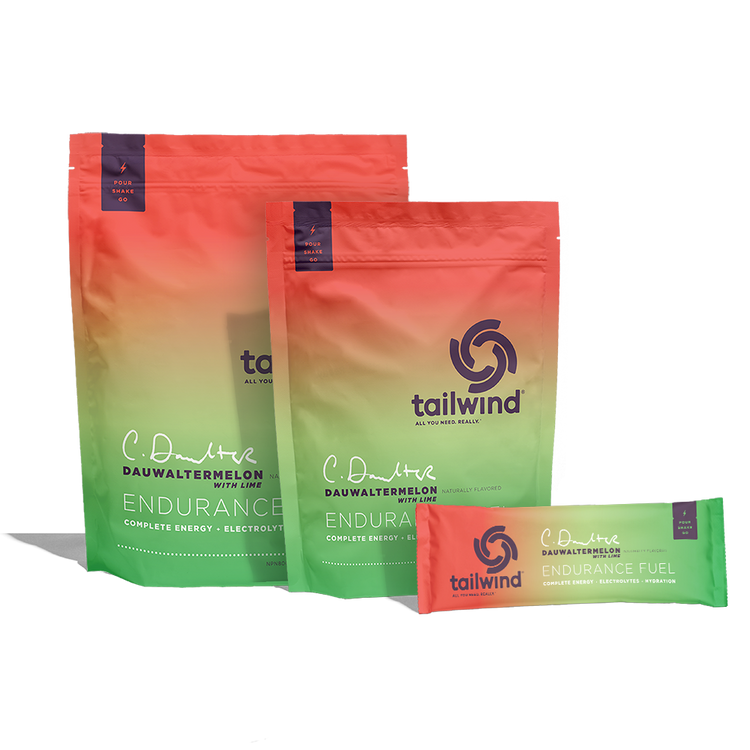Fueling for a Marathon: How to Stay Energized from Start to Finish
4 Comments
Key Takeaways:
-
Proper fueling starts in training, not just on race day
-
You need carbs, electrolytes, and hydration to go the distance
-
A consistent fueling strategy helps prevent bonking and GI issues
-
Practice your race day nutrition ahead of time to avoid surprises
Why Fueling Matters in a Marathon
Training gets you to the start line, but fueling gets you to the finish. During a marathon, your body relies heavily on carbohydrates to power your muscles and brain. Without enough fuel, you risk hitting the dreaded wall, when your energy crashes and every step feels harder than the last.
How Much Fuel Do You Actually Need?
Most runners burn through their stored glycogen within 90 minutes. That means for any effort over an hour and a half, you need to consume carbs while running.
The sweet spot for most runners is 30 to 60 grams of carbohydrates per hour, starting around the 45-minute mark. Tailwind Endurance Fuel makes this easy by combining carbs, electrolytes, and hydration in one easy-to-digest drink.
What About Electrolytes?
Electrolytes are just as important as carbs. When you sweat, your body loses sodium, potassium, magnesium, and calcium. Replacing those electrolytes helps prevent cramping, supports fluid balance, and keeps your muscles firing mile after mile.
Tailwind Endurance Fuel includes all four key electrolytes in the right ratios to keep you balanced without needing additional supplements.
Should I Still Drink Water?
You can, but with Tailwind, there’s no need to juggle multiple bottles. It combines hydration, fuel, and electrolytes into one mix that’s light, not overly sweet, and easy on your stomach, even late in the race.
Timing Is Everything: How to Fuel on Race Day
Here’s a general guide to follow:
Before the race: Sip water or an electrolyte drink like Tailwind Rapid Hydration
Start fueling: Around 45 minutes into your race
Keep it consistent: Take in fuel every 30 to 45 minutes
Avoid the crash: Don’t wait until you feel tired or thirsty to start fueling
The Most Important Rule: Practice in Training
Nothing new on race day. That includes your fueling strategy. Practice with the same fuel, flavors, and timing during long runs so you know what works and how your body responds.
Ready to Run Strong?
Marathon success is built on more than miles. A solid fueling plan helps you feel stronger, go farther, and recover faster. Tailwind was designed by athletes for athletes to be simple, effective, and easy to use.







4 comments
What is the best tailwind fuel for doing a marathon?
———
Tailwind Nutrition replied:
Hi there! Our Endurance Fuel is best for marathon distances, happy training!
I ran a warm 12miles to try out tailwind. My stomach has never felt better on a run! I was shocked! I have been battling GI issues while running my whole life, taking acid reducers and Imodium to ease the discomfort, but it never stopped me because I love the experience of running. It was chronically limiting how far I could go, how hard I could run, and where. I’m am not sure how you did it, but I am telling everyone I know about the tailwind products. Thank you! This is a game changer.
———
Tailwind Nutrition replied:
Hi Laurie! We’re super happy to hear this and is the foundation of why Tailwind exists! To eliminate GI issues and to fuel and hydrate during activity! Happy training and running!
Training for a marathon in 6 weeks . Looking at tailwind for my fuel but not wanting to run with a bladder . Looking at least 5 hours to complete . Any advice would be welcome . Am looking at other fuels to eat as well eg malt loaf thank you
Tomorrow is my first 20 mile run ever. My 1st Marathon is 1 month and 1 day away. I am excited about running with Raspberry tailwind. I love it so much I got the big bag. Thanks for the tips on how much per hour to drink.